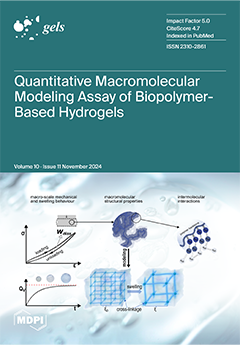This study compared the chemical, structural, and luminescent properties of xerogel-based ceramic powders (CPs) with those of a new series of crystallized aerogels (CAs) synthesized by the epoxy-assisted sol–gel process. Materials with different proportions of Eu
3+ (2, 5, 8, and 10 mol%)
[...] Read more.
This study compared the chemical, structural, and luminescent properties of xerogel-based ceramic powders (CPs) with those of a new series of crystallized aerogels (CAs) synthesized by the epoxy-assisted sol–gel process. Materials with different proportions of Eu
3+ (2, 5, 8, and 10 mol%) were synthesized in Lu
2O
3 host matrices, as well as a Eu
2O
3 matrix for comparative purposes. The products were analyzed by infrared spectroscopy (IR), X-ray diffraction (XRD), scanning electron microscopy (SEM) with energy-dispersive spectroscopy (EDS), transmission electron microscopy (TEM), photoluminescence analysis, and by the Brunauer–Emmett–Teller (BET) technique. The results show a band associated with the M-O bond, located at around 575 cm
−1. XRD enabled us to check two ensembles: matrices (Lu
2O
3 or Eu
2O
3) and doping (Lu
2O
3:Eu
3+) with appropriate chemical compositions featuring C-type crystal structures and intense reflections by the (222) plane, with an interplanar distance of around 0.3 nm. Also, the porous morphology presented by the materials consisted of interconnected particles that formed three-dimensional networks. Finally, emission bands due to the energy transitions (
5D
J, where J = 0, 1, 2, and 3) were caused by the Eu
3+ ions. The samples doped at 10 mol% showed orange-pink photoluminescence and had the longest disintegration times and greatest quantum yields with respect to the crystallized Eu
2O
3 aerogel.
Full article






